Geologists and scientists still debate the origins of The Pinnacles in Western Australia, yet they are united in admiration for these incredible stone spires that rise dramatically from the golden-red sands of Nambung National Park. Tourists echo this sentiment, with many drawn to see these marvels, making The Pinnacles the most popular attraction in Western Australia outside of Perth. I was among the eager visitors, along with the stunning 51 metal sculptures at Lake Ballard, Wave Rock, and the Western Goldfields—all must-visit spots on my itinerary.
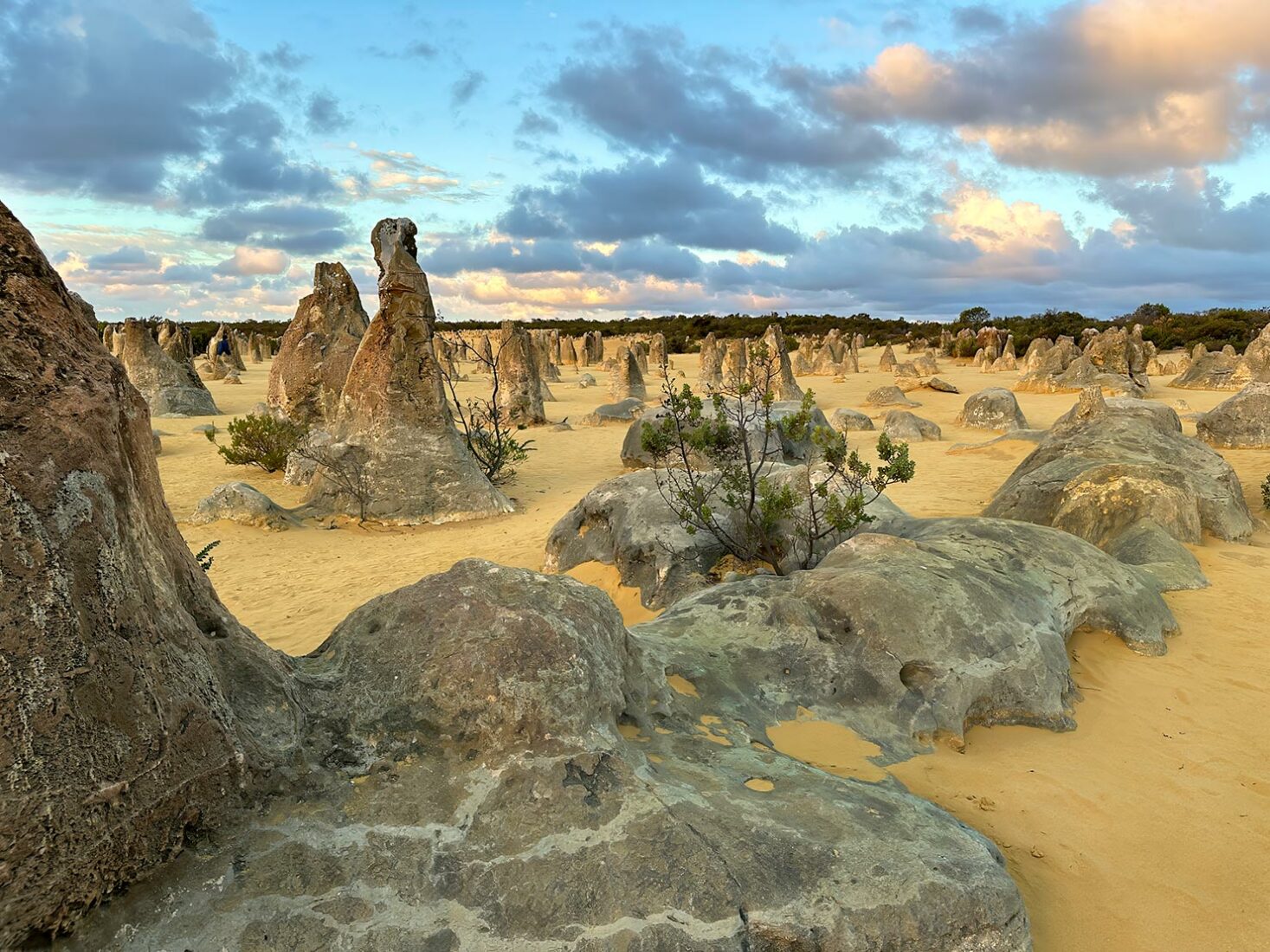
Nambung National Park is located about 2.5 hours north of Perth, conveniently situated just east of Route 60, also known as Indian Ocean Road. This coastal highway weaves through vast wind-sculpted white sand dunes, offering occasional glimpses of the sparkling Indian Ocean. Lacking a rental car, I opted for a day tour organized by Australian Pinnacle Tours. Among the five available options, I chose their Pinnacle Stargazing tour. After a quick stop at Yanchep National Park to observe koalas and kangaroos, we arrived at The Pinnacles in the late afternoon.
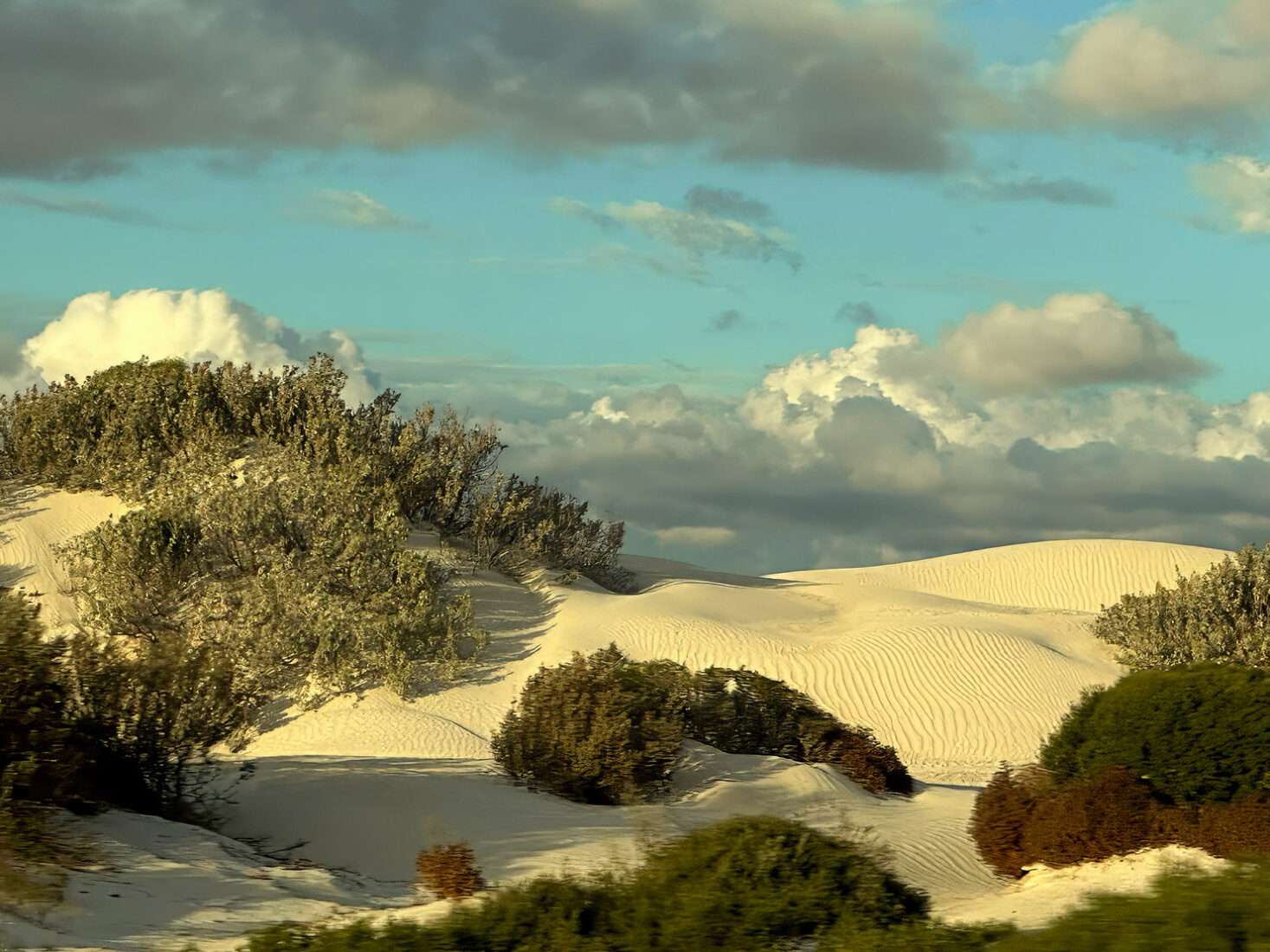

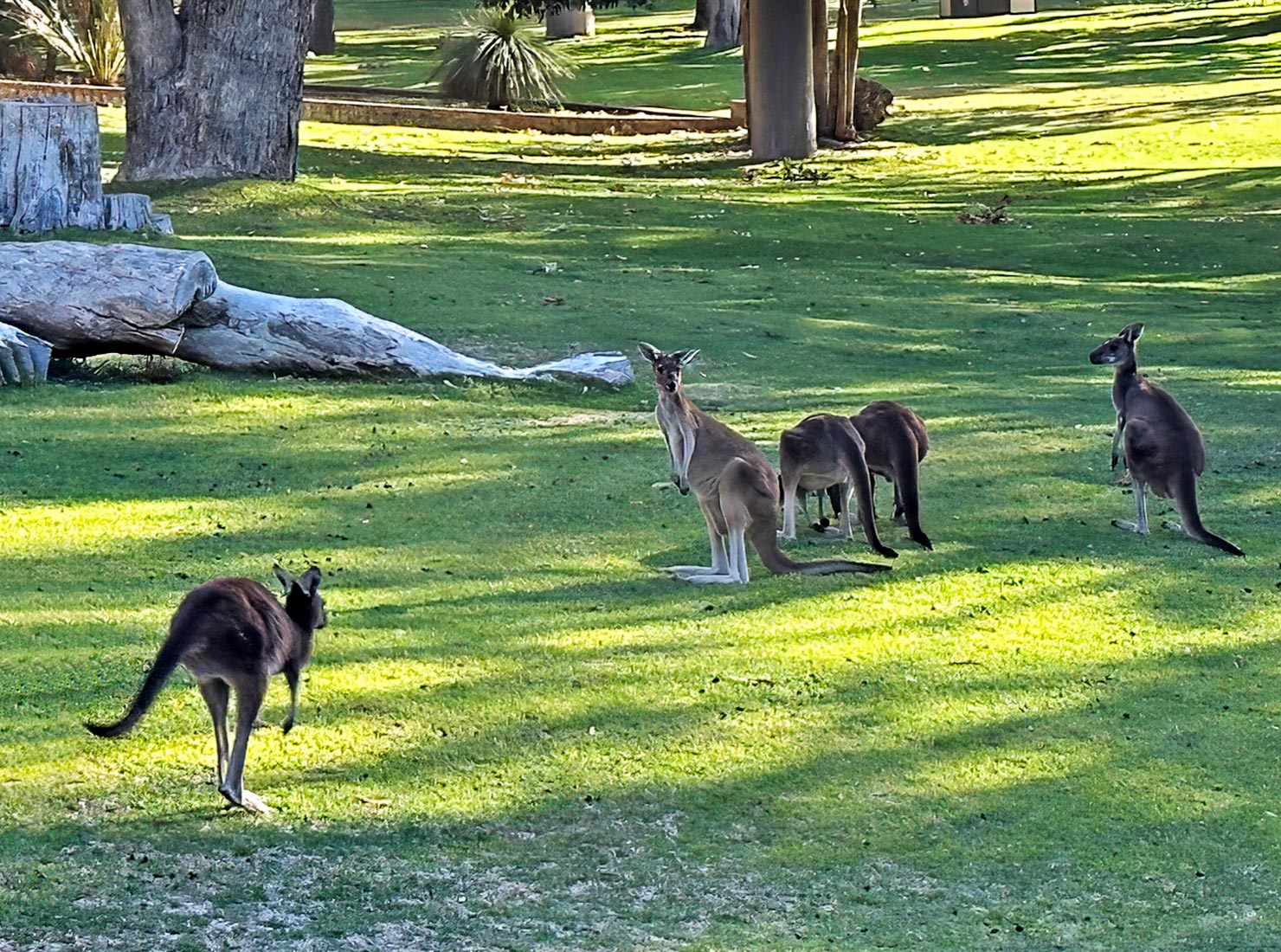

Once we arrived, our guide allowed us to explore the unique rock formations independently, with instructions to regroup an hour later on a nearby high sand dune for the sunset view over the ocean. Captivated, I wandered among the thousands of pinnacles rising from the ochre sand, reminiscent of a bed of sharp nails awaiting a Hindu Yogi. Some of the more delicate-looking spires are composed of a cemented mix of calcium, gravel, sand, clay, and silt, while the majority are formed from Karst limestone, displaying pockmarks of miniature sinkholes and caves. Evidence of moss, lichen, and ancient water flows are marked by wavy lines at the bases of these stunning formations.
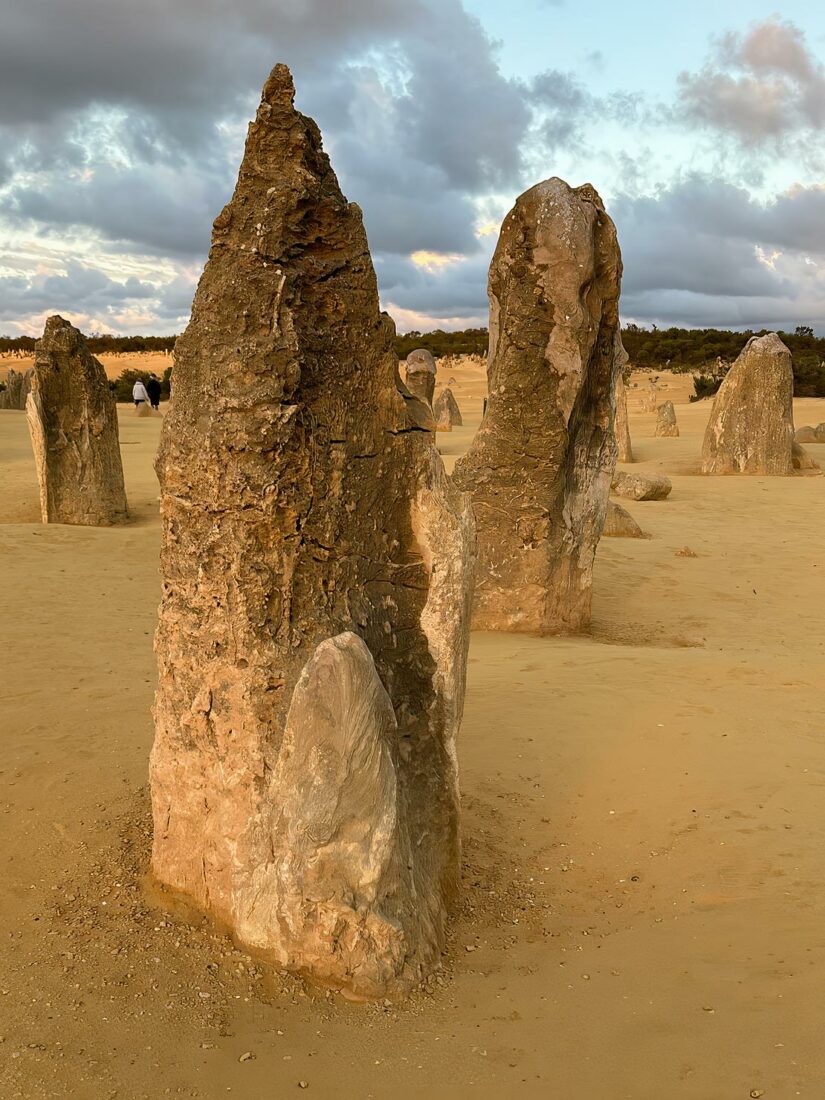

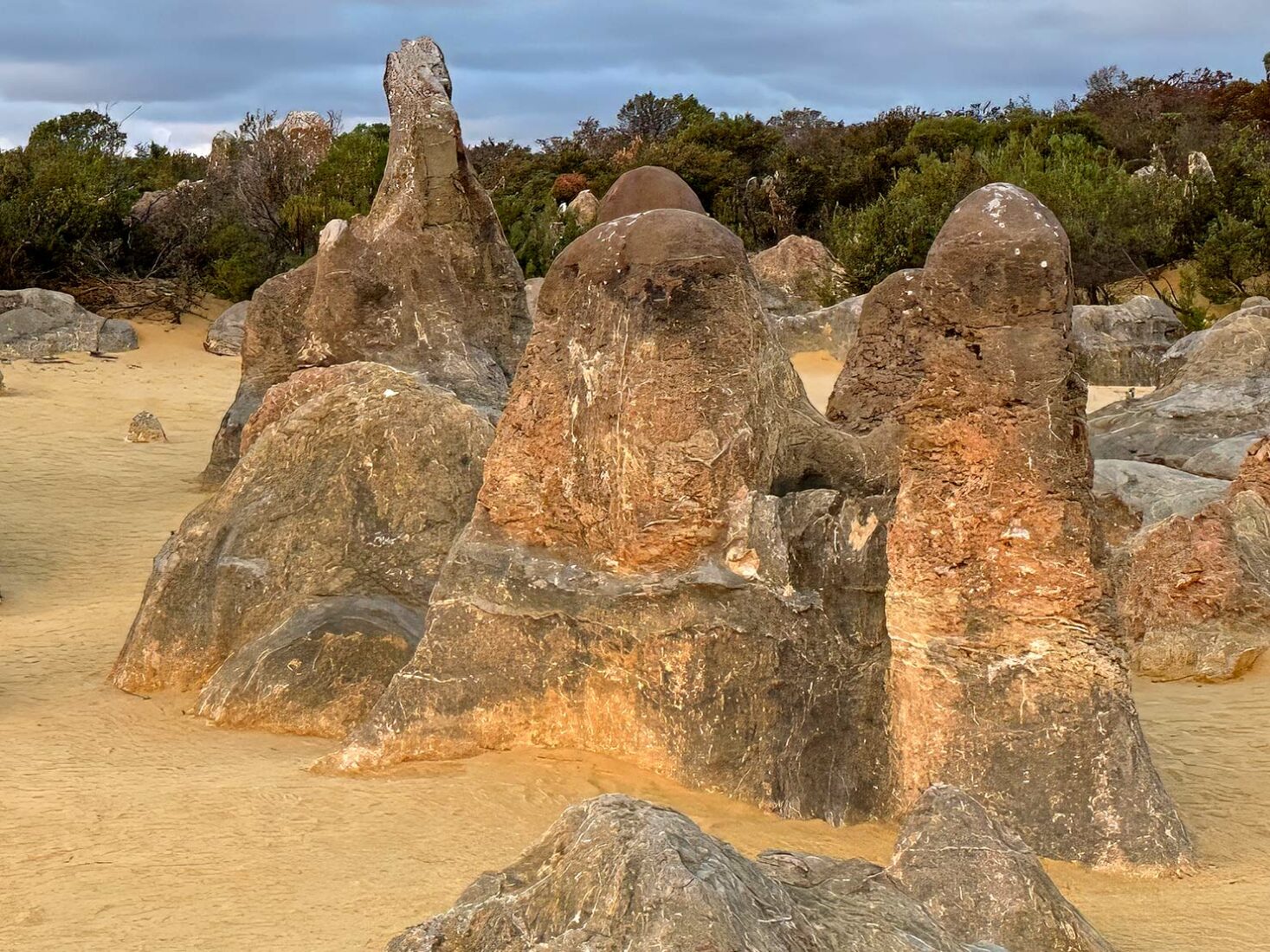

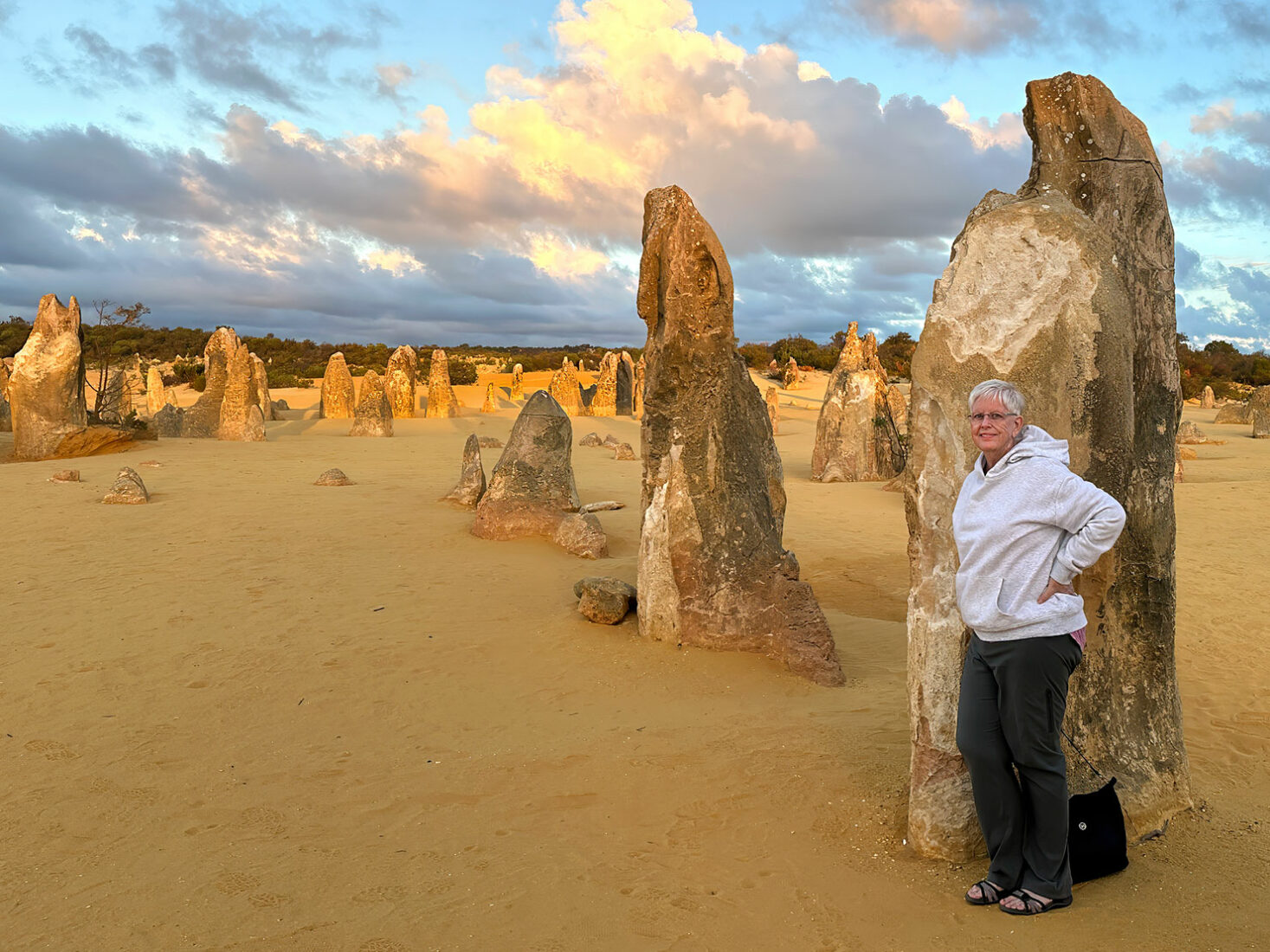

The exact formation date of The Pinnacles remains uncertain. While most experts suggest they are between 25,000 and 30,000 years old, some contend they could be up to half a million years old. Various theories exist regarding their creation. Some propose they are the remnants of an ancient forest, with massive tree trunks calcified through mineral-rich water deposition, while others theorize that plants played a role through transpiration, drawing dissolved minerals to their roots, leading to calcification.
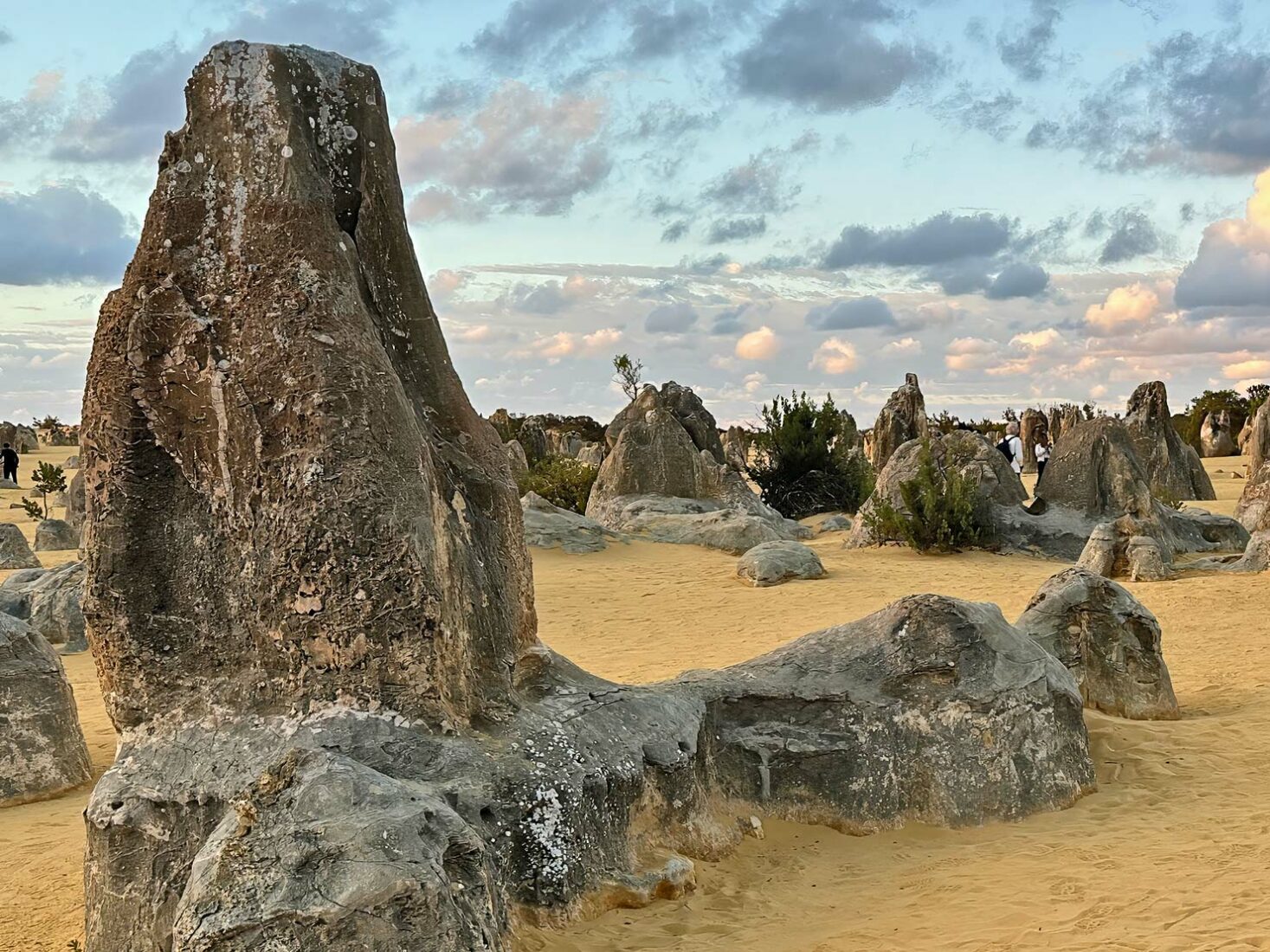

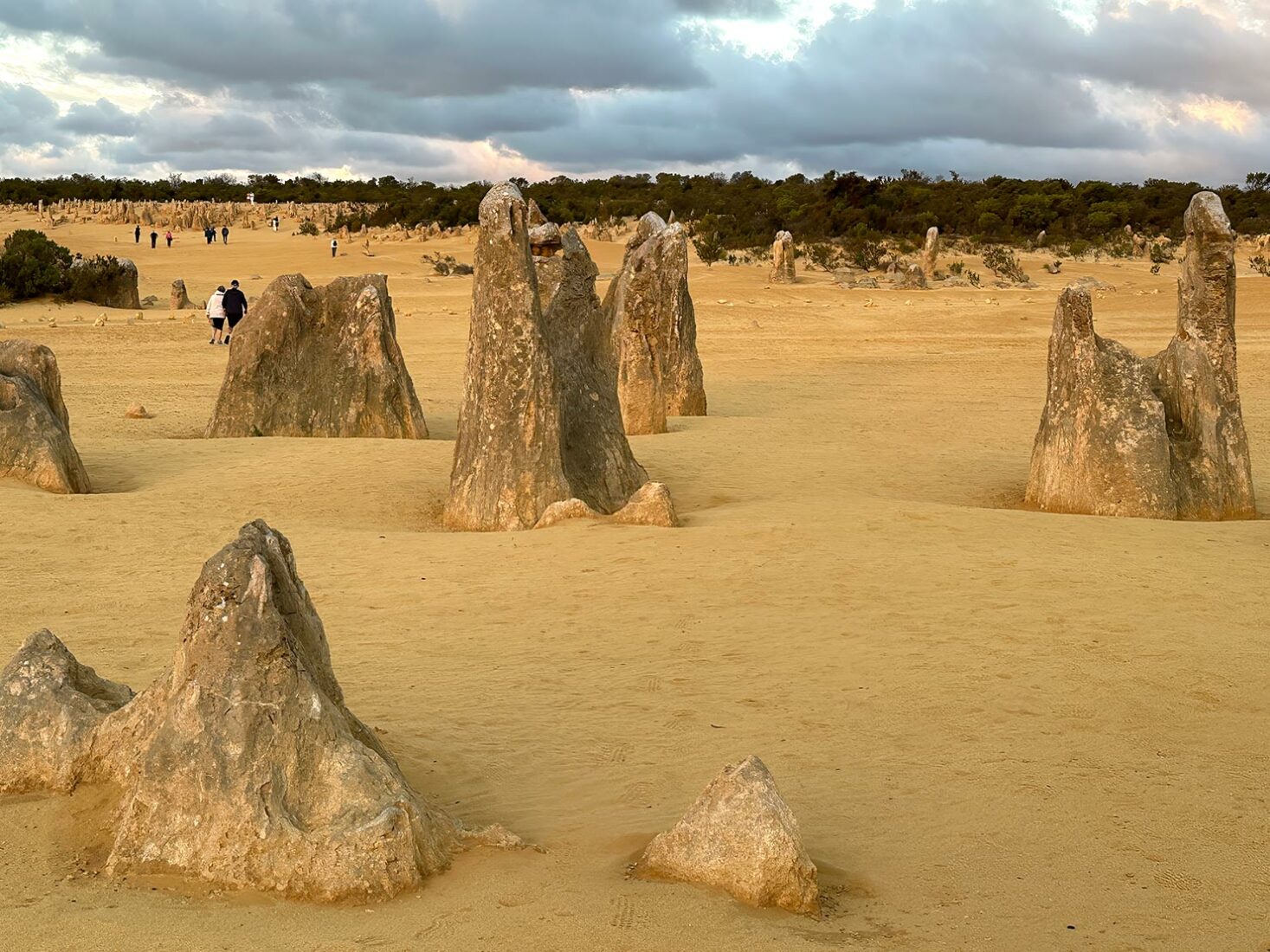

However, the prevailing belief is that The Pinnacles originated from seashells that were abundant 500,000 years ago when shallow seas covered the region. As shells accumulated on the ocean floor, they gradually compressed into a dense limestone layer. When the sea retreated around 25,000 years ago, some shells disintegrated into lime-rich sands that formed wind-swept dunes, while more resilient limestone remained intact. Over thousands of years, the relentless forces of wind and water eroded the surrounding sands, revealing the hard limestone structures we see today.
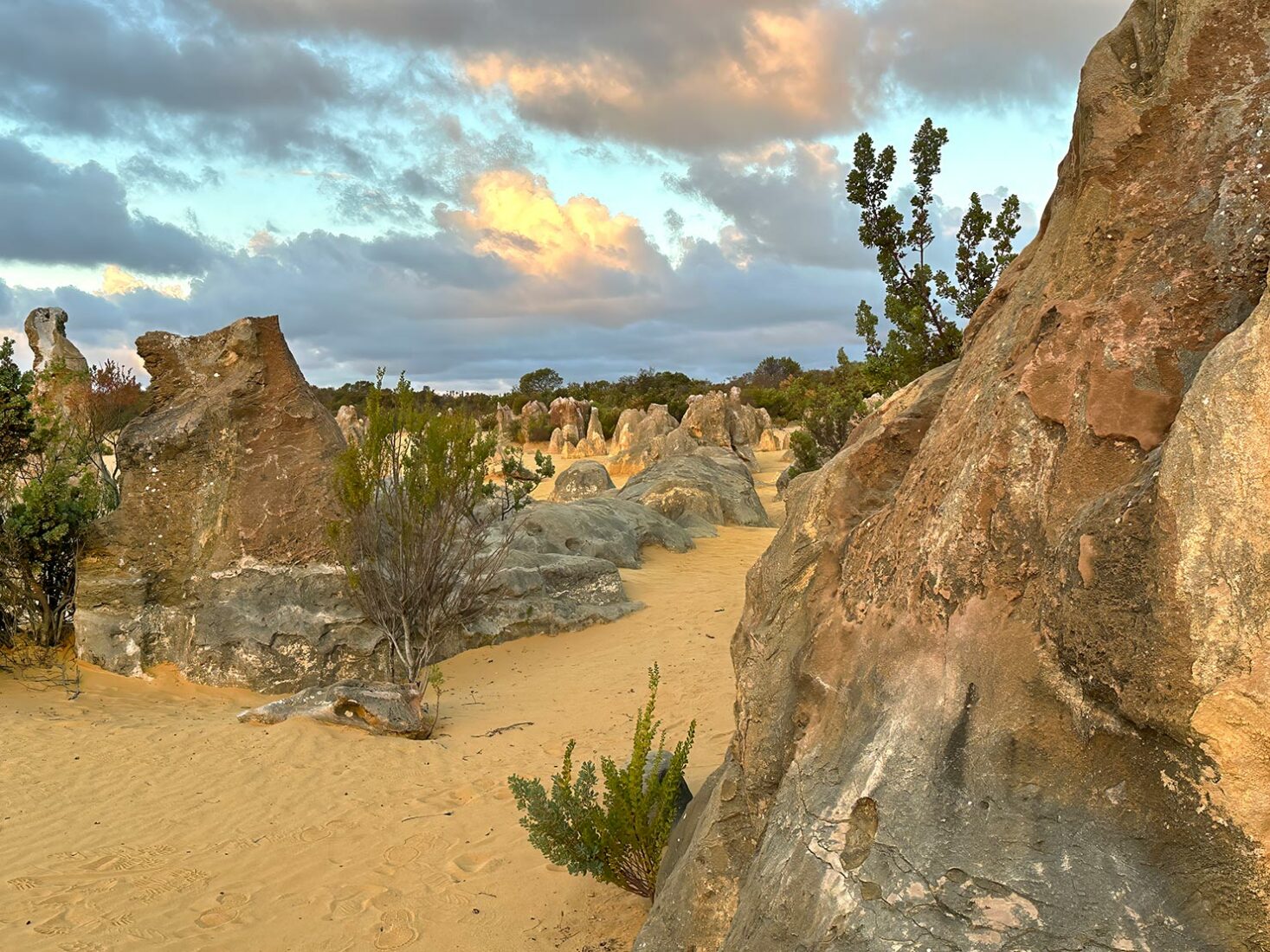

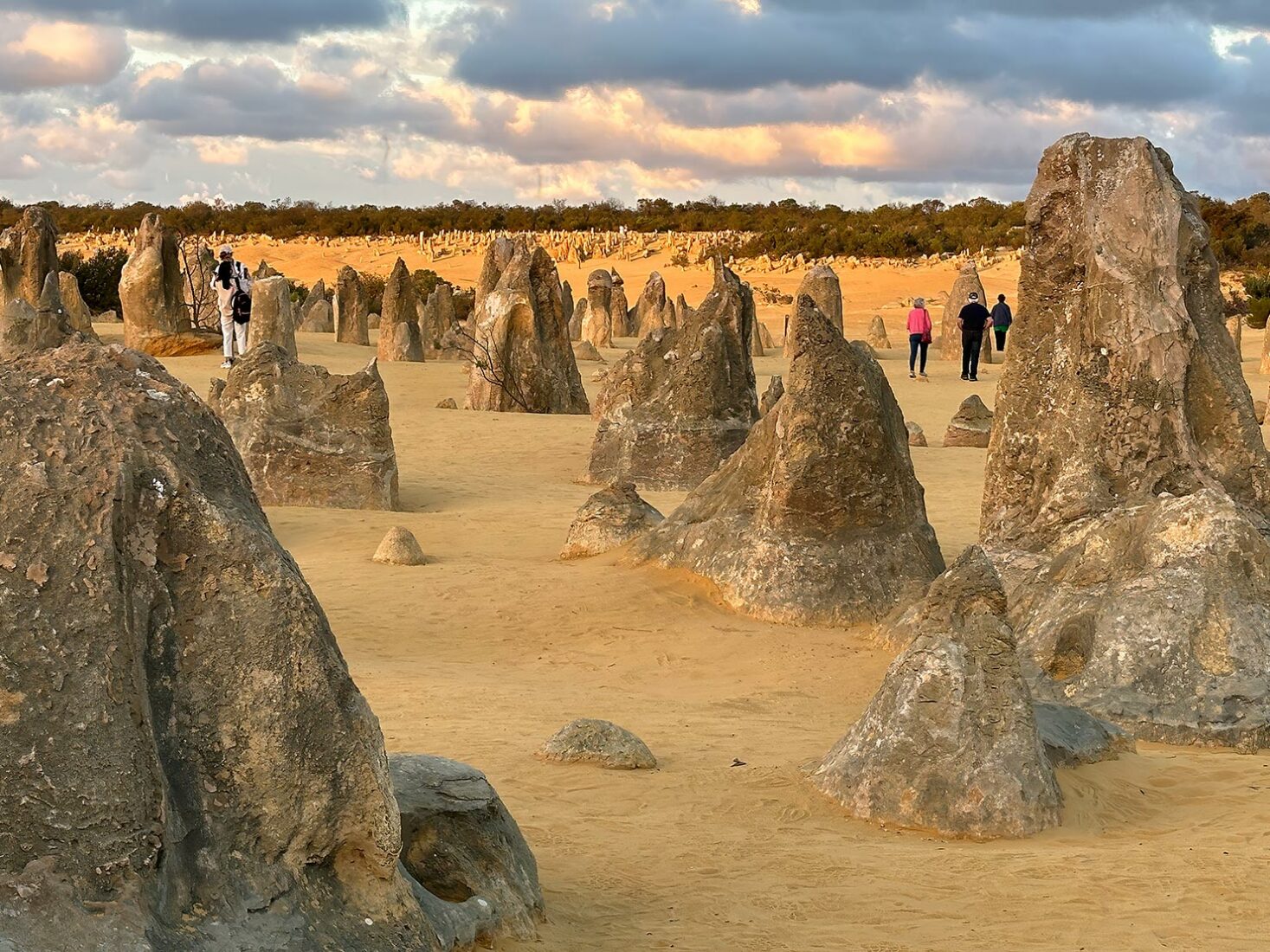

As the golden hour approached, I climbed to the top of the highest dune. Words fell away as our group gathered to witness the sun dipping below the Indian Ocean. The sand transformed into a shimmering sea of bronze, and the clouds ignited in shades of red and gold. In moments like this, it’s hard not to believe in a greater force at play; such beauty feels beyond human creation.
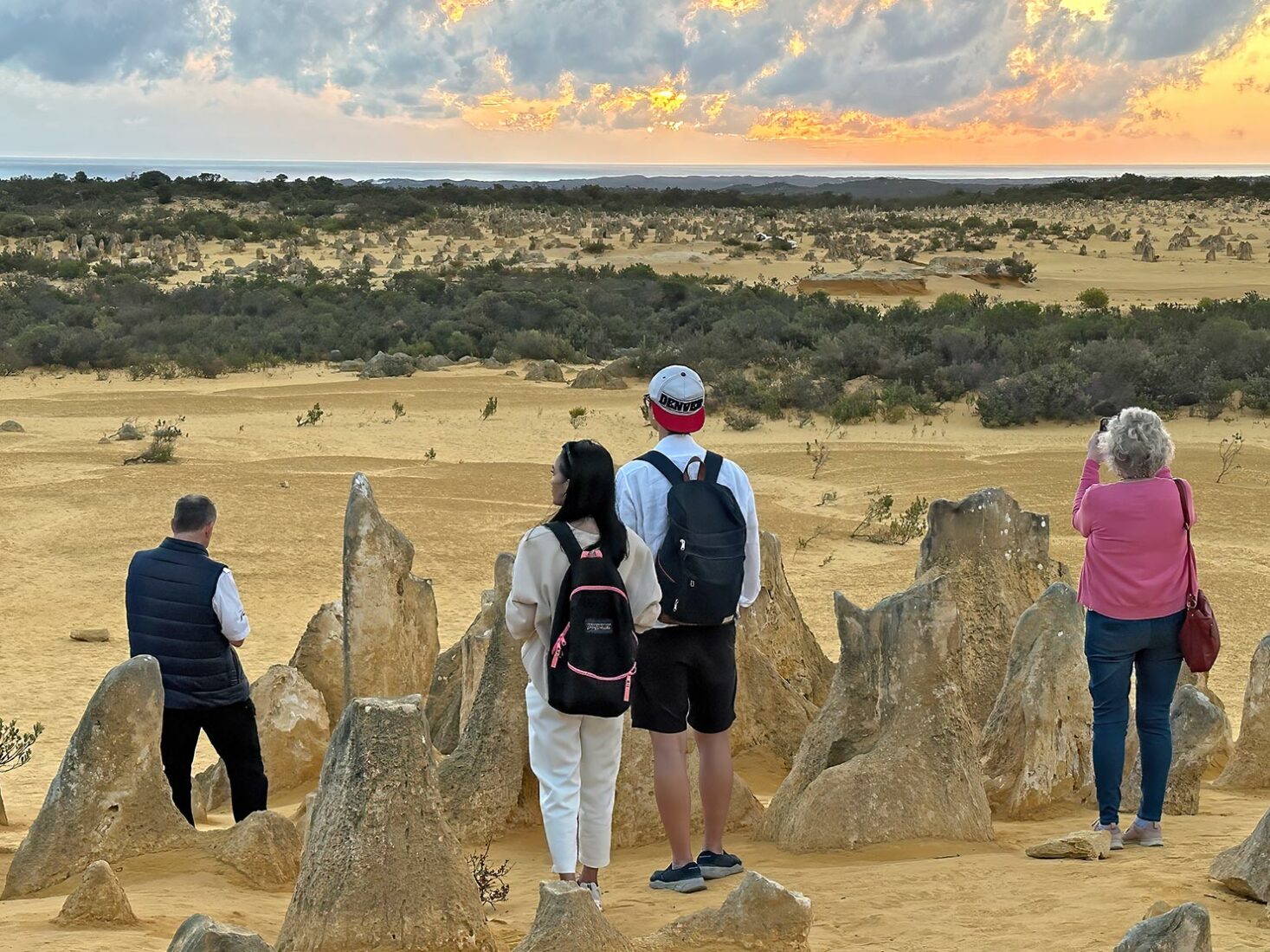

As night fell, we made our way back to the tour bus and headed to the Cervantes Bar and Bistro for dinner while we waited for complete darkness. Surprisingly, the meal was delicious given that Cervantes is a town with a mere 480 residents.
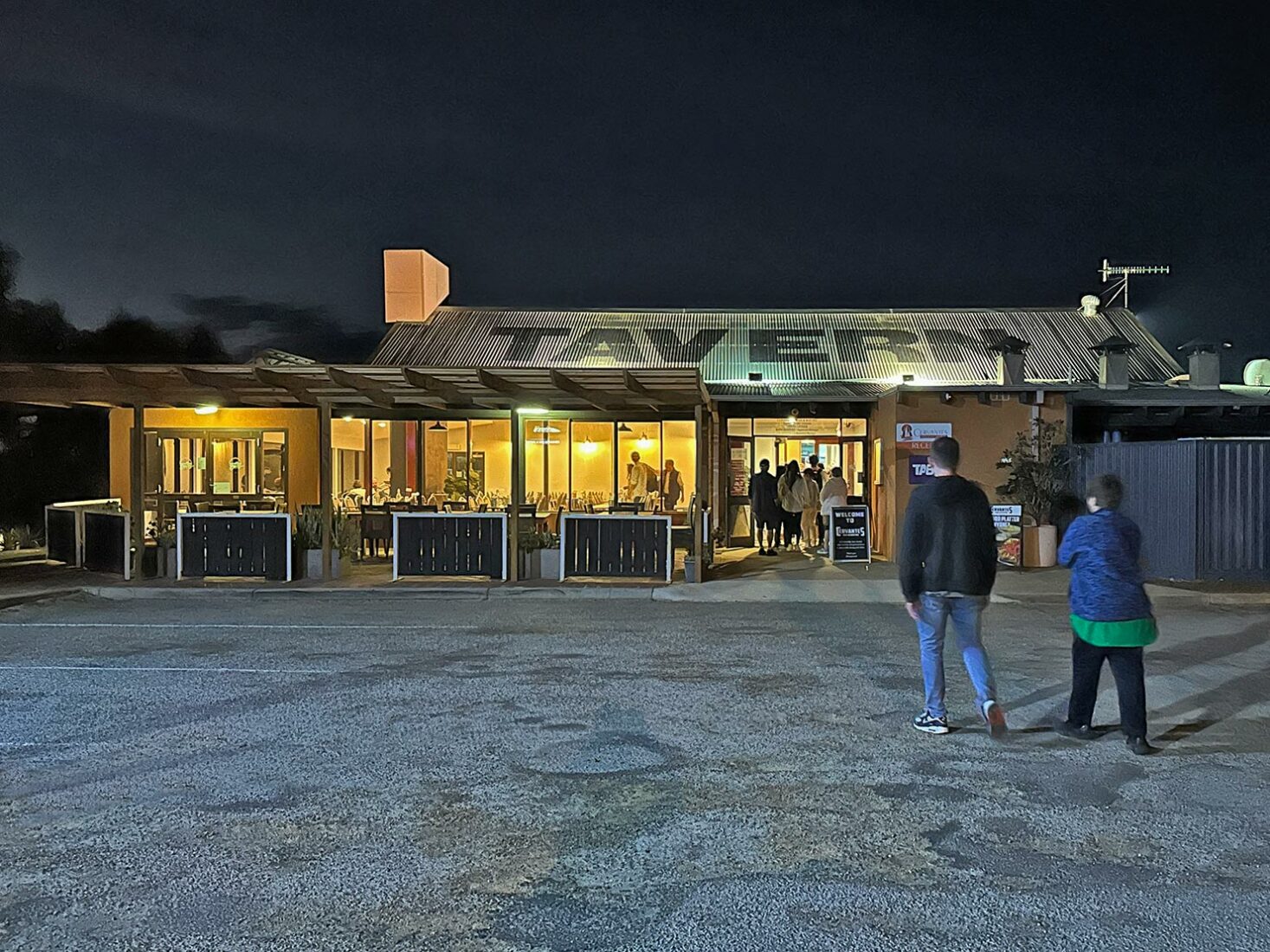

An hour later, we boarded the bus again for our return to Nambung National Park for the stargazing segment of the tour. The tour company’s website showcases breathtaking photos of the Milky Way arching over The Pinnacles, and I was excited about capturing similar shots, especially given the park’s lack of light pollution. However, the experience fell short of my expectations, as we never ventured beyond the parking lot. Our guide pointed out constellations and planets using a laser pointer, but there was no chance for actual astrophotography of the stars against the stunning rock formations.
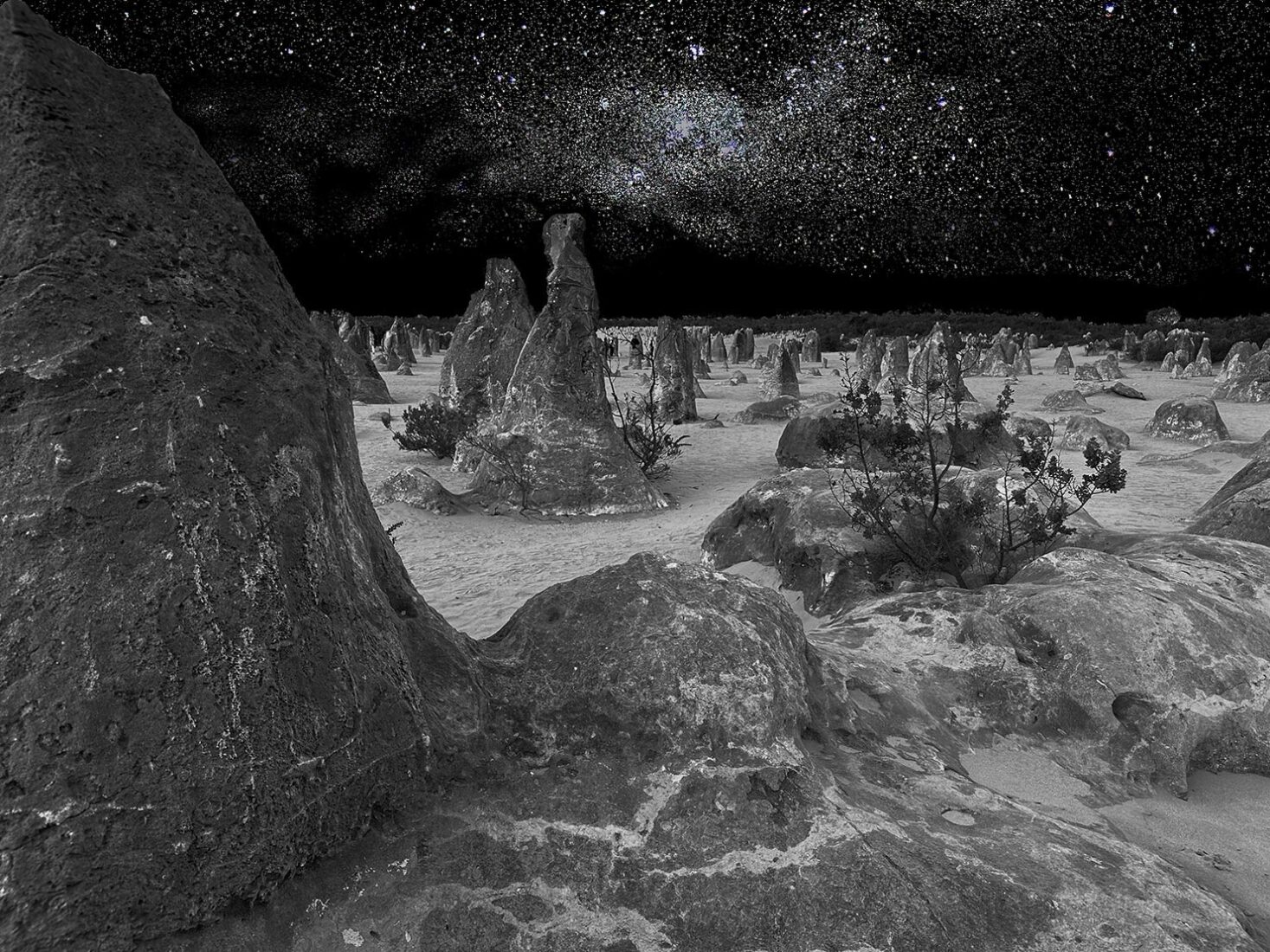

Despite the interruptions from passing car headlights, I managed to take a few photos of the night sky. I enhanced them in Photoshop and combined them with a shot of The Pinnacles. While it may not capture the true essence of that night, it allowed me to visualize the spectacular scene that could have been. Though the stargazing part of the tour did not meet my expectations, the overall experience was remarkable. Next time, I’ll rent a car and explore independently.
What is the Aboriginal Connection to The Pinnacles in Western Australia?
The area now known as Nambung National Park is the traditional land of the Yued people. These groups continue to gather in the desert for traditional ceremonies, births, and stargazing. The Pinnacles hold sacred significance for them and should be approached with deep respect. Visitors are welcome to explore and photograph, but climbing the formations or removing pieces of them is strictly prohibited.
What is the Best Way to See The Pinnacles?
I found that walking provided the best experience to see the park and its geological wonders. At least two hours is necessary to explore the largest area of formations, and I recommend staying to witness the spectacular sunsets, just as I did. For those who may have difficulty walking, there is a clearly marked sandy road that is accessible by two-wheel-drive vehicles.
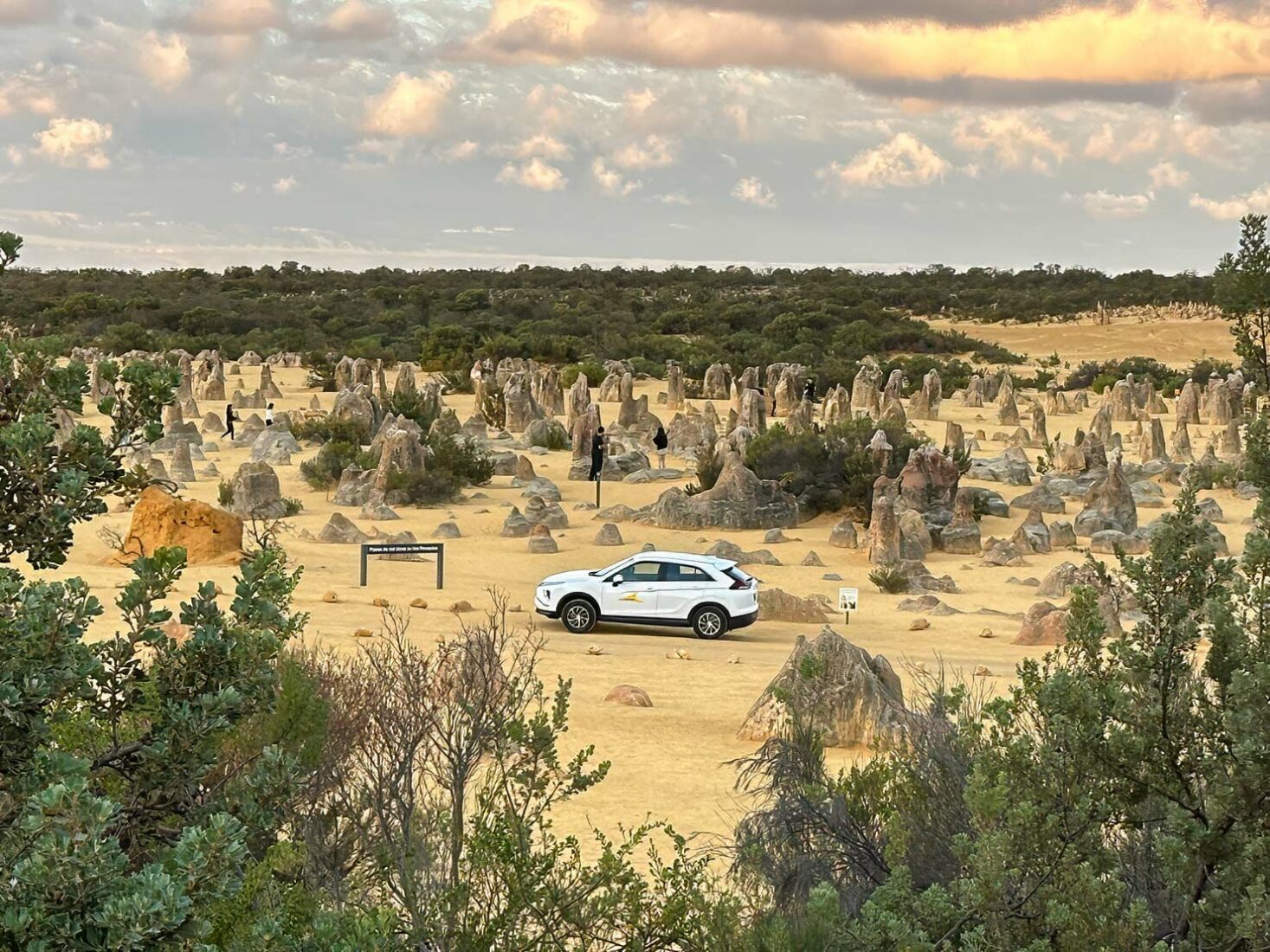

What is the Entrance Fee?
The fee for a private vehicle carrying up to 12 passengers is $17 AUD (approximately $11.50 USD as of this writing).
What Hours is The Pinnacles in Western Australia Open?
Technically, the park is open 24 hours a day, although some sources indicate that visitors are expected to leave by 9 p.m.
What is the Pet Policy for Nambung National Park and The Pinnacles?
Pets are not allowed in the park.
Other Things to Do in Nambung National Park and the Surrounding Area
- Visit the Desert Discovery Centre (Visitor Centre) at Nambung National Park, located near the entrance to The Pinnacles. It is open every day from 9:30 a.m. to 4:30 p.m.
- If you visit Nambung National Park between August and October, you can witness a stunning display of wildflowers blooming across the shifting sand dunes and heathlands.
- The town of Cervantes is renowned for its lobster catch, which can be observed from the jetties and Thirsty Point Lookout overlooking the Indian Ocean. After watching fishermen bring in their haul, enjoy a freshly grilled lobster at the local Lobster Shack. For fishing enthusiasts, Thirsty Point Lookout is also an excellent spot to try your luck. The town offers beautiful swimming beaches and snorkeling opportunities.
- Just outside Cervantes, take a walk along the loop trail and boardwalk at Lake Thetis to explore ancient marine fossils called stromatolites—rock-like structures dating back to the beginnings of life on Earth.
- At Jurien Bay Marine Park, located north of Cervantes, you can swim at the park’s beautiful beaches and snorkel in the protected offshore reef system.



